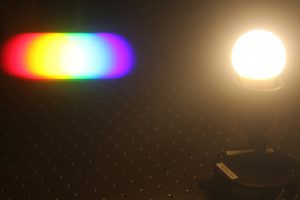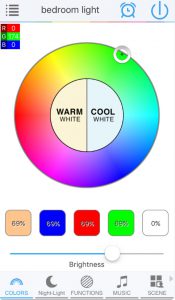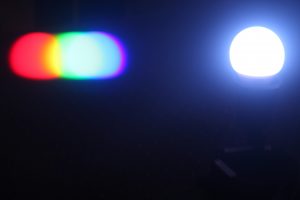Diffraction
Overview: Different types of light bulbs operate with different principles, and this leads to unique emission spectra. Diffraction glasses can be used to observe differences in various light sources.
Supplies: Diffraction glasses, light bulb bars, spectral tubes
Objectives: What is the electromagnetic spectrum? What wavelengths do our eyes see? How do different types of light bulbs work?
Setup:
- Turn off any room lights and try to make your surrounding area as dark as possible
- Plug in and turn on the spectral tube carousel. Rotate the carousel through each of the sources waiting for each one to turn on before moving on to the next. Some sources may take up to 3 minutes to warm up. Once warm, they should each come on immediately when the carousel is turned
- Plug in and turn on the light bulbs. Bulbs can be shown one at a time or all at once
- Pass out diffraction glasses
Note: Be sure to check which direction your diffraction glasses are aligned before the demo. Depending on the brand of glasses, the bar of light bulbs should be arranged vertically or horizontally such that the individual spectra do not overlap.
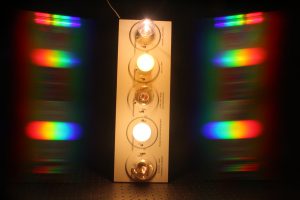
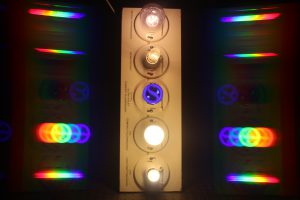
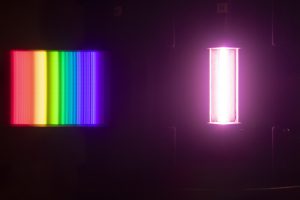
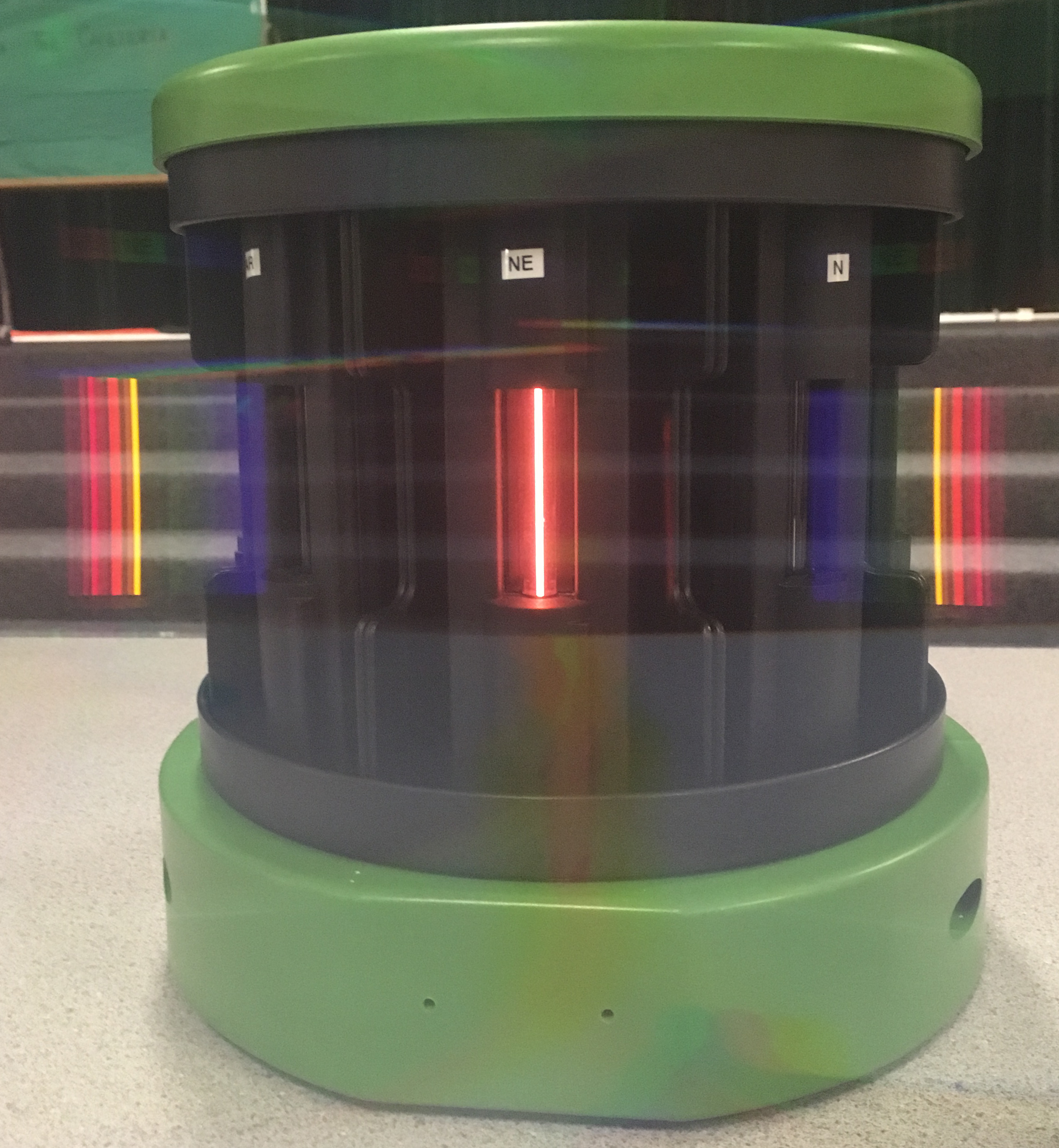
How to run the demo:
- Put on a pair of diffraction glasses
- Check out the diffraction patterns of various light sources
- Explain how the patterns change with the different types of sources
- Explain how spectral sources are different from the white light of the bulbs
What’s Happening?
White light can be separated into all seven major colors of the complete spectrum or rainbow by using a diffraction grating. The grating separates light into colors as the light passes through the many fine slits of the grating. Each color travels at a different speed and therefore has a different angle of refraction when it hits the grating. When light passes through a grating it is called a transmission grating. There are also reflection gratings. A reflection grating is a shiny surface having many fine grooves. A compact disc makes a good reflection grating, as does chocolate!
There are four types of bulbs on the bars, incandescent, halogen, fluorescent and LED. Incandescent bulbs send electricity through a filament, which glows when heated to a high temperature. Halogen bulbs are a subclass of the incandescent. Similar to incandescent, halogen bulbs start by heating a filament with electricity. The difference with the halogen bulb is that the filament is contained in a quartz capsule that is filled with halogen gas. As particles in the filament are burned off, the halogen redeposits them back onto the filament. This reuse of filament particles creates a higher luminosity than standard incandescent bulbs. In fluorescent bulbs Argon gas is excited by electricity. The excited gas generates UV light. This UV light in turn excites the phosphor coating on the inside of the bulb to generate the visible light. An LED is a light emitting diode. An electric current passes through a diode which causes an energy excitement that causes an energy release that we see as photons, or light.
There are also subclasses of the bulbs on the bar. There are clear glass incandescent, frosted incandescent, a bug lamp, a reveal lamp and a UV lamp. Take note of how the clear glass incandescent and frosted look in the diffraction glasses. The color patter is the same, but you can see the filament in the clear glass and the frosted glass has a more lambertian look. The bug lamp is coated in yellow. Bugs are attracted to the blue in white light. By putting a yellow coating on the bulb it blocks the blue light and therefore bugs will not congregate around the bulb and your porch and be attracted inside your house. The reveal bulb works the opposite. The blue coating blocks the yellow light. This type of bulb is used in closets to make clothes look whiter by blocking the yellow light. Turn on the frosted incandescent, bug lamp and reveal bulb at the same time. Look closely at the spectrum. Can you see the blue missing in the bug lamp spectrum? Can you see the yellow missing in the reveal bulb? We can see the purple end of the spectrum in the UV lamp, but not the actual UV light. Refer to the page on luminescence for more information on UV light.
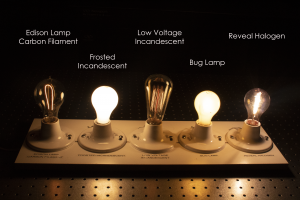
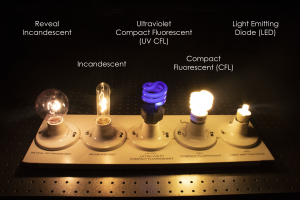
Try this:
- Use a spectrometer to more clearly see subtle (and sometimes not so subtle) changes between the spectral curves of each of the bulbs.
- Use an infrared camera and check out the light bulbs. Leave them all on for a minute, then turn all the bulbs off. Which lights are still producing heat even once the bulbs are off? What does this mean reveal about the efficiency of different types of bulbs?
- Try a Phillips Hue Smart Bulb, and use the app to control the color via bluetooth.
